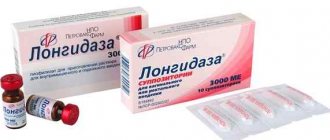Factors influencing cycle length
- 1. If you strictly follow this method, then natural family planning can be effective in 99% of cases, that is, out of 100 women using it during the year, only one will become pregnant.
- 2. With various errors in the application of the safe days method, the risk of becoming pregnant increases 4 times, that is, every 4th woman who uses this method with errors, for example, irregularly notes her symptoms or does not take into account a number of certain factors that may influence to the loop and change it.
- 3. The method of natural family planning is universal; it can be used not only to prevent pregnancy, but also, on the contrary, to identify the most favorable days for conception.
- 4. This technique appeared in the second half of the 20th century, and is currently used by millions of married couples.
- 5. The naturalness of the method lies in the fact that no additional means of protection are required, you only need to be able to observe your body. In addition, this method of contraception is safe because it does not use chemicals, which means there are no side effects.
- 6. In order to learn to recognize your body’s signals, it will take some time - from 3 to 6 months. To most accurately determine safe days, you need to keep a continuous record for at least a year.
- 7. Signs of fertility can be influenced by many factors, which it is advisable to also write down in order to understand where certain changes come from.
- 8. During dangerous days, it is necessary to use barrier methods of contraception, for example, condoms or a diaphragm, or perhaps completely abstain from sex during this period. As an alternative, you can choose other methods of sexual activity.
Natural family planning is available to almost every woman, but there are certain circumstances that can make it inaccurate. In this case, this method can be used as an additional, but not the main method of protection.
These factors include:
- Heart diseases in which pregnancy is dangerous.
- Dependence on alcohol or drugs, as well as taking certain drugs that can cause birth defects in the fetus (in this case, there is a risk to the health of the unborn child).
- Irregular cycle, when predicting fertile days is difficult or even impossible. An irregular cycle can be caused by age, stress, rapid weight gain or, conversely, weight loss, and an overactive thyroid gland.
- Temporary conditions such as pelvic inflammation, sexually transmitted infections, and others (you must undergo a course of treatment before using the safe days method).
- Long-term problems such as cervical cancer, liver or thyroid disease.
Other ways to determine safe days
Vaginal discharge can indicate your readiness to conceive. If they become liquid, like water, then the risk of pregnancy is high. But the reliability of this method leaves much to be desired. Not everyone has observation skills, and the consistency of the discharge may vary depending on the state of health. So this method of determining unfavorable days is best used as an auxiliary one.
If you have no luck with the reference cycle, and you don’t want to bother with a thermometer, you can use tests. They are not free, but they will save time and allow you to relax a little. There are two types of such tests.
- For urine. Don't track your cycle, just remember the start date of your period. Do a test after 10-12 days. It responds to luteinizing hormone, which is released during ovulation. Avoid excessive fluid intake 3-4 hours before the test. Otherwise, the urine will be too dilute and the reagents will not be able to react correctly to the presence of the hormone.
- For saliva. This is the most accurate test, virtually eliminating the possibility of error. If 2 stripes appear, then the probability of pregnancy is highest. If the second stripe is poorly visible, then the egg is almost mature and is preparing to be released. In both cases, unprotected sex is not advisable. One bar indicates safe days. It is important to remember that the test does not see the follicle, but only reacts to hormonal changes. Therefore, in rare cases, an error may occur.
An integrated approach will allow you to accurately determine the safe period for pregnancy. Monitor your basal temperature for several months, determine the approximate date of ovulation and insurance days. Periodically monitor your calculations using tests. Do not forget that stress, illness and sudden climate change can shift the date of ovulation.
Factors influencing cycle length
The menstrual cycle is individual for each woman and lasts generally from 24 to 35 days, but can be longer or shorter. The average cycle length is 28 days.
A mature egg is released from the ovaries (this process is called ovulation) and begins to move through the fallopian tube.
But depending on the length of the cycle, it can happen earlier or later. When calculating safe days, it is important to take all these subtleties into account.
For fertilization to occur, a sperm must meet an egg.
A healthy woman has days when fertilization can occur and when it cannot. In addition, there are days when fertilization should not occur, but there is still a small chance.
To get pregnant, a woman must have unprotected sex during the period when the egg can connect with the sperm. These are the days of fertility.
They depend on the lifespan of the egg and sperm.
Thanks to this, you can track safe days for sex. But you need to do this carefully, because it happens differently not only in each woman, but also in the same woman every month.
The length of the cycle may change over time, so for a more accurate calculation you need to monitor the cycle for at least 12 months.
The calendar method is not the most reliable way to calculate safe days, so it is better to use it not independently, but in conjunction with other methods.
With the beginning of intimate life, the problem of choosing a method of protection against an unplanned pregnancy arises. When choosing your method of safe sex, you count on one hundred percent confidence in protection and safety for health.
Many women are fundamentally not allowed mechanical and chemical measures of protection; religious denominations and the church allow only a biological method of protection against pregnancy. How accurately can you calculate the safe days of the menstrual cycle and are they really safe? Let’s try to figure this out.
The article discusses questions about how to calculate safe days on which you can not use protection, how to correctly find out which days of your period you are least likely to get pregnant, and how to correctly use the calendar method of pregnancy.
Further in the article we will learn more about how to correctly calculate dangerous days for pregnancy after menstruation, what dangerous days there are for pregnancy after menstruation.
In order to talk about safe or likely days for conceiving a child, you need to know what the menstrual cycle is. The menstrual cycle is the cyclical changes in a woman's reproductive system.
The beginning of the cycle is determined by the first day of menstruation; in the normal course of the cycle, menstruation lasts an average of 3 - 7 days. The healthy development of the cycle is 21 - 35 days, a 28-day cycle is considered ideal.
The menstrual cycle is divided into three phases: follicular - the first day of menstruation, occurs as a result of endometrial rejection and lasts approximately 14 days; ovular - the beginning of the phase occurs approximately on the 7th day of the cycle, lasting no more than 3 days.
During this period, the follicle ruptures and the cells begin to accumulate luteal pigment and lipids, forming a vesicular follicle. Because of its yellow pigment content, it was called the body luteum. The corpus luteum begins to produce hormones, thus preparing the uterus for a possible pregnancy.
If fertilization is successful, the corpus luteum begins to produce progesterone until the placenta is completely formed. If fertilization does not occur, the corpus luteum stops producing hormones and the next menstruation occurs.
An article about what day after your period you can get pregnant, when, and on what days of the menstrual cycle may also be useful.
Taking into account knowledge about the process of the cycle, you can easily determine dangerous or less dangerous days for conception, because there are no absolutely safe days when reproductive function completely stops. You can calculate the probability days by knowing the exact calendar of your cycle; several methods have been developed for this.
The least likely days for conception are two days before menstruation and two days after bleeding has stopped. You can rely on a cycle calendar only if the menstrual cycle is stable and regular. For example, if the cycle is 28 - 30 days, then the most likely days for pregnancy are 12 -16 days.
Unfortunately, the onset of menstruation depends not only on the maturation of the corpus luteum, but also on many external factors, such as changes in climate or time zone, psycho-emotional state, taking certain medications can cause a delay or, on the contrary, provoke the onset of menstrual periods ahead of schedule.
It is recommended to display all these changes in an individual menstrual cycle calendar.
The most accurate can be considered a calendar, the analysis of which was carried out over six months, ideally a year, and no failures or cycle violations were identified.
How much can you trust these two days before the onset of menstruation, why are they considered less likely for fertilization. The answer to these doubts can be found if you understand in detail what is happening these days. How to calculate safe days from pregnancy?
- Two days before the start of the critical days, the production of progesterone and estrogen sharply decreases and the endometrium is rejected, forming menstrual bleeding along with which an unfertilized egg is released, which makes conception almost impossible.
- It is extremely rare that two eggs mature during a cycle; this is called spontaneous ovulation; doctors cannot yet explain the reason for this phenomenon, but they suggest a genetic predisposition of the body. During this period, pregnancy can occur on any day of the cycle.
Taking into account the above, we can confidently say that you should not rely on the safety of these non-dangerous days.
Many women are sure that the safest days for pregnancy are immediately after the end of menstruation, and indeed hormonal levels and the absence of an egg ready for fertilization make these days favorable for unprotected sexual intercourse. The question of where 12% of those who became pregnant during this period comes from has a very easy explanation.
Some sperm are able to remain viable in a woman’s fallopian tubes for 6 days. So, if contact occurred in the first days after menstruation, pregnancy can occur much later due to the surviving sperm and waiting for the maturation of a new egg.
It happens in 2% of women; to accurately determine this day, a special ovulation test has been developed, which can be purchased at the pharmacy.
Taking into account all the nuances of the female cycle, it becomes clear that you should not create a menstrual calendar and rely 100% on it. It is much safer to choose the method of protection that is most suitable for both partners.
You can read more about which contraceptive method is best to choose in the article: which contraceptives are best to use.
Modern pharmaceuticals offer a large selection of effective contraceptive methods that will not harm your health and will provide protection from unexpected pregnancy, and an experienced specialist will help with this, taking into account your lifestyle and health status.
When choosing a means of protection, you should always remember about sexually transmitted diseases, which are transmitted only sexually, and about the incompatibility of bacteria in the microflora of partners, which will lead to irritation and discomfort in the genital area after sexual intercourse. Even the healthiest male partner can be a carrier of fungi - thrush, which does not manifest itself in any way, but a woman will have a long and tedious life with unpleasant symptoms of thrush.
You shouldn’t be too upset if an unplanned pregnancy occurs, because children are joy, and the meaning of every person’s life is to give a new life and continue the development of humanity.
Your life has been filled with the happiness of motherhood, which many are not given the opportunity to experience.
If you are not a supporter of contraception and want to avoid pregnancy, then you need to pin your hopes on the so-called favorable and unfavorable days.
Following the “calendar planning”, favorable days for safe sexual intercourse are two days both before and after the end of the menstrual cycle. To correctly compile this calendar, you should calculate the timing and duration of your periods with maximum accuracy.
This condition can only be met if the cycle runs stably without periodic failures. The permissible error ranges from 1-3 days.
The ideal cycle is considered to be within 25-35 days. If it takes 28-30 days, which is the most common case among many women, then the 12th and 16th days are considered the most dangerous for conception. Do not forget about the possibility of cycle shift due to the influence of numerous factors. Some of them may be:
- use of medications;
- stress;
- sudden changes in body weight;
- physical exercise;
- climate change.
It is also possible to calculate the dates when it is absolutely not advisable to have sexual intercourse without contraception if you want to avoid pregnancy.
The arithmetic is quite simple: from the total amount of the menstrual cycle, subtract the number 11, then subtract the number 8, and thus the most unsafe day for sexual intercourse becomes known.
On what days after menstruation is it impossible to get pregnant?
In an attempt to make sexual intercourse as safe as possible, many try to calculate the most favorable days for this.
Theoretically, it is not difficult to calculate such a period, but no one can give a 100% guarantee of success.
There is no complete guarantee that you will not get pregnant immediately after your period.
Even with the most accurate and regular cycle, a healthy woman can experience unexpected misfires: hormonal imbalance, the presence of a favorable environment for the functioning of sperm, in which their activity persists for up to ten days.
Absolutely safe days
Yes, there are days that are absolutely safe for having sex.
We are talking about anovulatory cycles, which occur extremely rarely in women - no more than 1-2 times a year. During this period, there is no ovulation at all, and you don’t have to be afraid of getting pregnant.
However, calculating these “magic” days is very difficult: it is necessary to constantly measure basal temperature and record this data, regularly conduct folliculometry or conduct expensive ovulation tests. In practice, these methods are not so easy to implement.
Basal body temperature chart.
How does the calendar method work?
As stated above, to prevent pregnancy, women should track their menstrual cycle and abstain from unprotected sex on days when they are most likely to become pregnant. One of the most common methods for this purpose is the calendar method.
It is based on keeping a record of each menstrual cycle to determine the days when there is a risk of fertilization. For these purposes, you can use a calendar, both regular and special.
You need to circle the first day of each cycle and count the total number of days (including the first). This must be done for at least 8 months, and preferably 12.
Next, you need to find the longest cycle and subtract the number 11 from the total number of days in it. Do the same procedure. The resulting number X is the last dangerous day.
During all the days that lie between these two days X, you cannot have unprotected sex.
But you cannot use this method if all cycles are shorter than 27 days. This method can only roughly predict dangerous and safe days. If the cycle is irregular, you should not rely on this method of protection. It is not safe to blindly trust the calendar; it is better to combine this method with others to get more accurate results.
Features of the menstrual cycle
During the reproductive period, cyclical changes occur that affect the entire female body. They are aimed at the maturation of the egg and, upon its fertilization, at normal attachment to the surface of the uterus. Normally, the menstrual cycle lasts from 21 to 35 days, most often 28. It can be divided into two phases: follicular and luteal.
The duration of the first phase of the menstrual cycle is individual for each woman; the luteal phase lasts 13-14 days. The egg is viable for an average of two days. If fertilization does not occur at this time, she dies. Sperm can remain active for 3-4 days. Knowing these indicators, you can calculate the most dangerous days for pregnancy.
Conception calendar
Thus, favorable days for conception are in the middle of the menstrual cycle (if it lasts 28 days) and plus or minus 1 more day. If your cycle lasts less or longer, you can turn to online calculators for help: you will need to enter data about your last menstruation and cycle length, and the program will display the result.
https://youtu.be/OveAnu1kiAo
The duration of the first phase of the menstrual cycle is individual for each woman; the luteal phase lasts 13-14 days. The egg is viable for an average of two days. If fertilization does not occur at this time, she dies. Sperm can remain active for 3-4 days. Knowing these indicators, you can calculate the most dangerous days for pregnancy.
Conception calendar
Standard days method
This is a variation of the calendar method. It is very easy to use and is suitable provided that the woman has a regular menstrual cycle that lasts at least 26 and no more than 32 days.
For convenience, you can purchase a special device like a rosary, which greatly simplifies the process of tracking your cycle. It consists of 33 colored balls and a movable rubber ring.
The first ball is black with a white arrow, the second is red. Then follow 6 brown, 12 white and another 13 brown balls.
Each ball corresponds to one day. On the first day of your period, you need to put a rubber ring on the red ball, and then just move it every day.
Brown balls are days when you won't get pregnant.
That is, this method is to protect yourself on the days when the ring hits the white ball.
With the standard day method, you need to track your cycle over several months. If it always lasts from 26 to 32 days, you need to use protection from the 8th to the 19th days.
Dangerous days for conception
Before menstruation, the possibility of egg fertilization is minimal. It should be noted that at times the body is capable of unscheduled ovulation. This is due to a physiological reaction to sexual intercourse. The situation is especially typical for women who have an irregular sex life and practice interrupted coitus.
Pregnancy during bleeding is extremely unlikely. The vaginal environment is a natural barrier to conception. It is worth noting that pregnancy can still occur, since sperm can linger in a woman’s body. Hormonal imbalances or the course of the disease also increase the chance of conception.
After the cycle is completed, safe days begin again. The egg matures and leaves the body, therefore, there is nothing for the male reproductive cells to fertilize. However, even in this case, some women become pregnant.
Dangerous days after menstruation are easy to calculate, provided that a woman’s menstruation is regular and she can confidently say how many days they last. This method of contraception is not suitable for frequent cycle changes.
To do this, you need to study the calendar of critical days for the last six months, or better yet, a year. The beginning of menstruation will be considered the first day of the cycle. Among the data obtained, it is necessary to find out the shortest and longest periods. Then subtract 18 from the first, and 11 from the second.
Let’s assume that the shortest cycle, according to calculations, is 24 days, and the longest is 30. We get: 24 – 18 = 6, 30 – 11 = 19. It turns out that the high probability of getting pregnant remains from the 6th to the 19th day after the start of menstruation.
It is believed that with a cyclicity of 28 days, ovulation occurs after 14 days from the start of menstruation. The error is 2 days before and after this date. The phase lasts only a couple of days, and then the unfertilized egg dies.
Using different methods for determining periods favorable for conception, you need to take into account that:
- Sperm remain viable inside the female body for about three to four days after ejaculation. Therefore, after unprotected sex in the last days before ovulation, a woman runs the risk of becoming pregnant.
- With this type of contraception, ectopic pregnancy cannot be ruled out.
- Due to stress, hormonal imbalance or due to irregular sex life, more than one egg may mature in the ovaries in one monthly cycle.
- Pregnancy depends not only on whether you had unprotected intercourse during ovulation. It is important that the endometrium reaches a certain thickness. If the layer of the uterine mucosa has grown by less than 7 mm, then the fertilized egg simply will not be able to attach to the walls of the organ and will leave the body with the release of blood.
- With a pathology such as a closed uterine canal, sperm will not be able to penetrate the mature female reproductive cell.
- With frequent menstruation failures, such calculations do not make sense.
All methods for determining dangerous or favorable times for conception will be effective provided that the woman is healthy and does not have pathologies of the reproductive system.
Advantages and disadvantages of the calendar method
Any method of contraception has its advantages and disadvantages. And the method of natural family planning is no exception.
Pros of the safe days method:
- No side effects
- Acceptable to all cultures and faiths
- Suitable for most women
- Can be used both to prevent pregnancy and to plan conception
- There is no effect on the body of various drugs
- Requires cooperation from a partner, which enhances intimacy and trust
- Completely free (you only need to purchase the calendar)
Disadvantages of this method:
- Does not protect against sexually transmitted infections
- Requires additional contraception or abstinence from intimacy on dangerous days
- If a decision is made to abstain from sexual intercourse, this can last quite a long time - up to 16 days
- May be less effective than other methods of contraception
- It is difficult to keep track of safe days for sex when approaching menopause, during adolescence, and also when breastfeeding, since the cycle is influenced by hormonal changes occurring in the body (hormonal drugs cannot be used)
This method is not suitable:
- If you have several sexual partners.
- If the partner does not agree to adhere to this method.
- If you don’t want to closely monitor safe days.
- I don’t want to abstain or use contraception for at least 10 days of the cycle.
- When taking medications that affect the length of the cycle.
There is a chance of getting pregnant, which increases significantly if this method is not used entirely correctly. In addition, it requires constant cooperation with a partner. Before you can be confident in identifying your safe days, you must go through several cycles during which you must use condoms.
Reviews about the calendar method
Opinions differ regarding the effectiveness of the calendar method:
- Some believe that this method of contraception is a thing of the past and it is stupid to use it with modern advances in medicine.
- Others say that the method may help someone, but among your friends you can meet women who have 3-4 children, despite the fact that the pregnancies were unplanned and they used this particular method as contraception.
- Still others claim that they have been protecting themselves this way for many years and everything was fine, although they have children (that is, the option of infertility disappears).
The calendar method does work, but it requires very careful recording of each menstrual cycle.
The safe days method will become more effective if you follow 4 simple rules:
- 1. Before you start using the calendar method, you need to study all its nuances in detail and strictly follow the instructions.
- 2. There must be a permanent sexual partner who will also not be against this method of protection (if there are several partners, this method is not suitable, since it will not be able to protect against various infections).
- 3. Discipline must be observed when maintaining accounts.
- 4. Be sure to use protection during ovulation days!
And one more thing - it is better to use this method when pregnancy seems to be undesirable, but if it does happen, then nothing terrible will happen.











